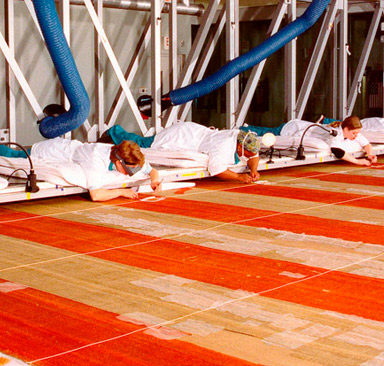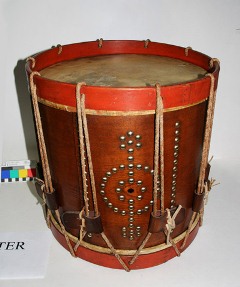A national treasure, the Star-Spangled Banner has been on view almost continuously since it came to the Smithsonian Institution in 1907. Despite receiving the best possible care, the flag, already timeworn, has deteriorated further from decades of exposure to light, pollution and temperature fluctuations.
Preserving the Star Spangled Banner

Image from Smithsonian Institute
On September 14, 1814, U.S. soldiers at Baltimore’s Fort McHenry raised a huge American flag to celebrate a crucial victory over British forces during the War of 1812. The sight of those “broad stripes and bright stars” inspired Francis Scott Key to write a song that eventually became the United States national anthem. Key’s words gave new significance to a national symbol and started a tradition through which generations of Americans have invested the flag with their own meanings and memories.
A national treasure, the Star-Spangled Banner has been on view almost continuously since it came to the Smithsonian Institution in 1907. Despite receiving the best possible care, the flag, already timeworn, has deteriorated further from decades of exposure to light, pollution and temperature fluctuations. In 1994 it was determined that the in order to remain on public display the flag would need to undergo a multi-year restorative treatment. The process included transporting the flag to a specially-built lab, help from a conservation team, and the use of specialized equipment. More details and images from the preservation project can be found at the Smithsonian Star-Spangled Banner website.
Resources for Protecting Historic Collections

NPS Photo
Although the Star-Spangled Banner may be the most high profile artifact from the War of 1812, there are a myriad of objects that have survived and require special care if they are to endure for future generations. To aid in the maintenance of both museum and private collections the National Park Service Museum Management Program has published a series of leaflets known as Conserve O Grams. These loose-leaf format documents are short, focused papers about caring for museum objects. They cover specific procedures, techniques and materials, resource lists, and up-to-day museum and archival techniques. New topics are added as needed and out-of-date issues are revised or deleted.
The Museum Management Program also provides a NPS Museum Handbook which provides guidance on, and outlines procedures for, the care and preventive conservation for all disciplines and materials represented by NPS collections. It covers professional ethics and topics from specialized storage, to exhibit environment standards, to conservation treatments, to emergency preparedness. The National Park Service also offers an interactive training program to teach any who is interested about storing and monitoring film-based photographic collections. Each segment of the program includes instructional videos, graphics and downloadable document to help guide each phase of the process.
Learn More
Part of a series of articles titled Preserving the War of 1812 for Future Generations.
Last updated: August 14, 2017
